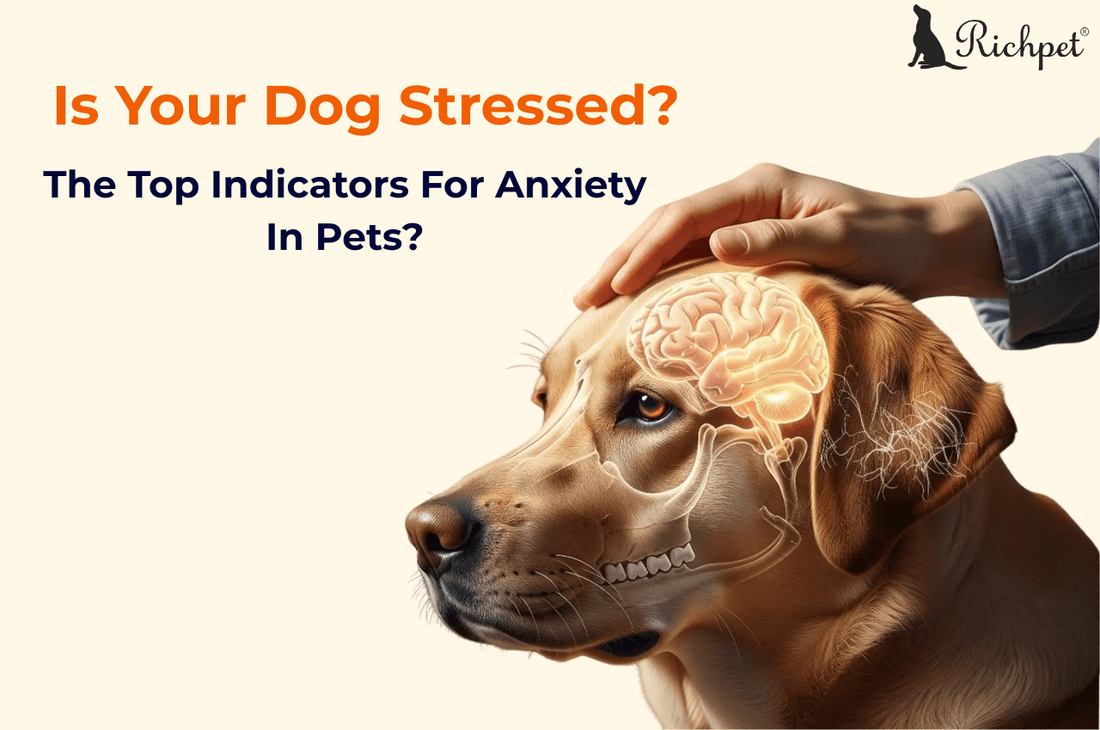
Is Your Dog Stressed? 10 Telltale Signs of Anxiety in Dogs
Your beloved dog acting a little off—maybe more destructive chewing, or hiding during a thunderstorm? These behaviors aren't just 'bad'; they could be clear signs of anxiety in dogs. Such distress is incredibly common, especially for our furry family members in bustling urban environments. Understanding these signals is the first step to truly helping them. This article will equip you with the knowledge to identify 10 telltale signs of anxiety and provide practical, actionable ways to help your dog feel safe and happy again.
Table of Contents
- Why Our Furry Friends Get Frazzled: Understanding the 'Why'
- Decoding Doggy Distress: 10 Telltale Signs You Shouldn't Ignore
- Your Action Plan: Helping Your Anxious Pup Find Calm
- Smart Solutions for a Calm Companion with Richpet
Why Our Furry Friends Get Frazzled: Understanding the 'Why'
Dog anxiety is remarkably common, particularly in Indian metro cities, where pets are cherished family members. Often, these behaviors aren't 'bad,' but rather your dog's way of coping with stress. Common triggers include: owners being away for work leading to separation anxiety, loud noises from Diwali celebrations or thunderstorms, abrupt changes in routine, or even past traumatic experiences. Recognizing these dog stress symptoms is crucial for empathetic support.
Decoding Doggy Distress: 10 Telltale Signs You Shouldn't Ignore
This is your essential guide to understanding your dog's unique body language and distress signals. Identifying these signs of anxiety in dogs is key to addressing their discomfort. In 2025, dog anxiety symptoms in India include excessive drooling, pacing, and house soiling. Additionally, India recorded 3.717 million dog bite cases in 2024, highlighting environmental stressors for urban pets. Here are 10 signs to watch for:
- Excessive Barking or Whining: Beyond normal vocalization, often persistent and without a clear trigger.
- Destructive Chewing/Digging: Frantic chewing focused on exit points or digging, not just play.
- Pacing or Restlessness: Constantly moving, unable to settle, even when tired.
- Excessive Panting/Drooling: When not hot or thirsty, a physiological stress response.
- Compulsive Licking/Chewing: Repetitive licking on themselves, often leading to skin irritation.
- Hiding or Cowering: Seeking isolation or showing fearful body language.
- 'Whale Eye': Showing the whites of their eyes when looking sideways, indicating discomfort.
- Sudden Potty Accidents: House soiling from a previously trained dog.
- Loss of Appetite: Refusing food or treats they normally love.
- Trembling or Shaking: In non-cold situations, a common sign of fear.
Your Action Plan: Helping Your Anxious Pup Find Calm
Empower yourself with this 4-step action plan on how to help an anxious dog at home:
- Create a Safe Zone: Provide a comfortable, den-like space with familiar scents where your dog can retreat and feel secure. This reduces dog stress symptoms.
- Establish a Predictable Routine: Consistent daily schedules for feeding, walks, and play reduce uncertainty, building confidence and independence.
- Provide Mental & Physical Stimulation: Daily walks and playtime are vital. Introduce 'mental workouts' through puzzle feeders or other enrichment toys for dogs to prevent boredom-induced anxiety.
- Use Positive Reinforcement: Reward calm behavior instead of punishing anxious displays. For severe or persistent cases, consult a professional trainer or vet.
Smart Solutions for a Calm Companion with Richpet
While knowledge is power, the right tools make a huge difference in implementing solutions for how to help an anxious dog. Richpet is committed to pet wellness, providing high-quality tools to support pet parents in creating a calmer, happier life for their best friends.
-
Healthy Chewing Outlets: Mention Richpet's natural, single-ingredient chews as a healthy and satisfying outlet for anxious chewing, keeping dogs occupied and happy.
Conclusion
Identifying the signs of anxiety in dogs is the crucial first step towards addressing their distress. A combination of empathetic management, consistent training, and the right tools can make a profound difference. You're a wonderful pet parent for seeking to understand your dog's needs. With a little patience and the right support, you can help them feel safe and confident again. Ready to create an even calmer environment for your best friend?
Frequently Asked Questions
What are the most common causes of dog anxiety?
Common causes include separation from owners, loud noises like thunderstorms or fireworks, sudden changes in routine, and past traumatic experiences. Many dogs in urban areas experience separation anxiety due to owners' work schedules.
How can enrichment toys help an anxious dog?
Enrichment toys, like puzzle feeders, provide mental stimulation, which can redirect anxious energy, combat boredom, and build confidence. Engaging your dog's mind helps them feel more settled and less stressed.
When should I seek professional help for my dog's anxiety?
If your dog's anxiety is severe, persistent, causes self-harm, or significantly impacts their quality of life despite your efforts, it's time to consult a professional dog trainer or veterinarian. They can offer tailored strategies and medical advice.
